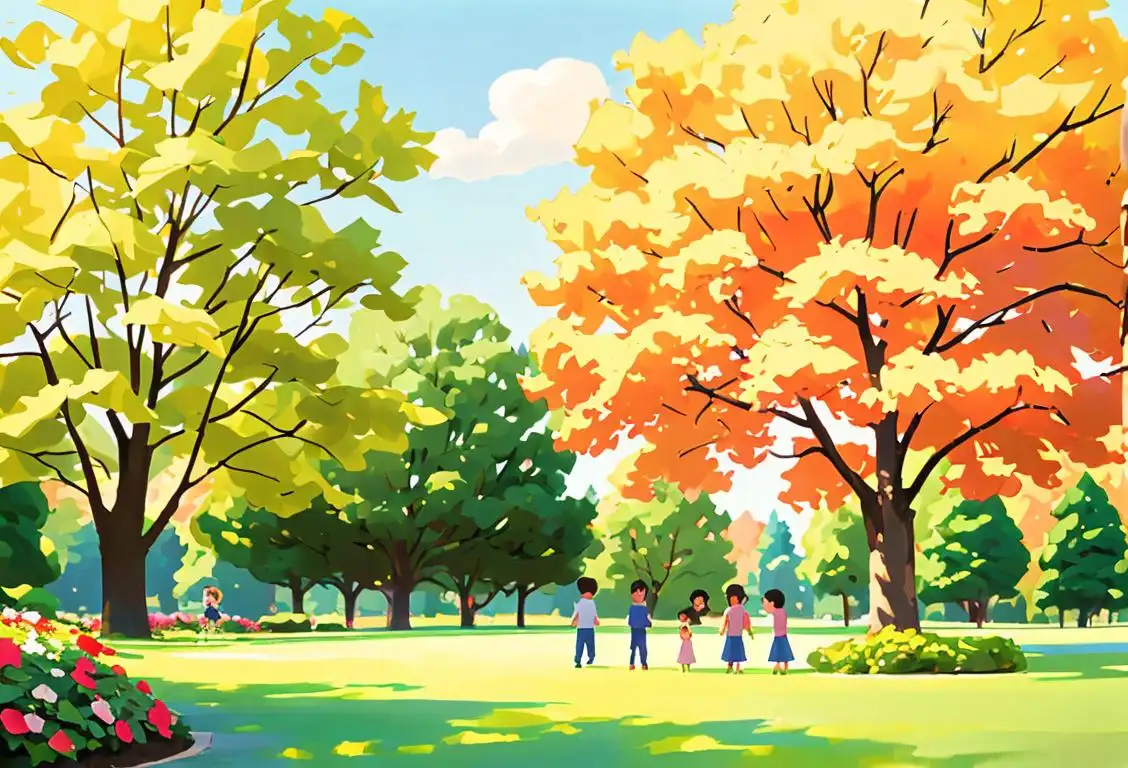National Look Up At The Sky Day

Are you ready to give your neck a break and look up at the sky? Well, mark your calendars because it's National Look Up at the Sky Day! This celestial celebration is all about appreciating the wonders that lie above us. So, put on your cosmic goggles and get ready for a celestial adventure!
When is Look Up At The Sky Day?
It's national look up at the sky day on the 14th April.
The Internet History of National Look Up at the Sky Day
Every year, on National Look Up at the Sky Day, people from all corners of the globe take a moment to stop and admire the vast expanse above them. This day, first observed on April 14th, 2020, quickly gained popularity as people realized just how much they had been missing.
Social media platforms filled with breathtaking photos of picturesque sunsets, fluffy clouds, and majestic starry nights. It became a viral sensation, with the hashtag #LookUpAtTheSkyDay trending worldwide. From whimsical sky sculptures to heartwarming messages written on the sky with colorful smoke, people found creative ways to express their appreciation for the cosmos.
The National History of National Look Up at the Sky Day
The idea behind National Look Up at the Sky Day is simple: take a moment to step away from the chaos of everyday life and reconnect with the natural world around us. It was created to remind us of the beauty and wonder we often overlook in our busy lives.
The origins of this unofficial holiday are shrouded in mystery, much like the mysteries of the universe itself. Some believe it was inspired by ancient cultures, who often look to the sky for guidance and inspiration. Others speculate that it was started by a group of stargazers who wanted to encourage people to appreciate the celestial wonders right above our heads.
How to Celebrate National Look Up at the Sky Day
There are countless ways to celebrate National Look Up at the Sky Day and immerse yourself in the celestial beauty. Here are a few ideas to get you started:
- Organize a stargazing party with friends and loved ones. Set up some cozy blankets, bring out a telescope, and spend the night marveling at the wonders of the universe.
- Go for a nature walk and take in the magnificent sky. Whether it's a clear blue day with a few fluffy clouds or a star-filled night, let the sky guide your steps and fill your heart with wonder.
- Get creative and make sky-themed crafts. Paint a celestial scene, knit a scarf inspired by the colors of the sky, or create your own constellation artwork.
- Document your sky-gazing adventures. Take photos or create a sky journal. Write down your thoughts and feelings as you contemplate the vastness of the universe.
Remember, National Look Up at the Sky Day is not just a day-long event; it's a reminder to pause and appreciate the sky every day. So, keep your eyes on the sky and let the magic unfold.
History behind the term 'Look Up At The Sky'
15th century
The Dawn of Curiosity
In the 15th century, the term 'look up at the sky' originated as people began to express their curiosity about the vastness of the heavens. As natural philosophers and astronomers explored the mysteries of the universe, individuals became more aware of the celestial bodies that adorned the night sky.
Ancient Times
Gazing at the Heavens
Since ancient times, humans have been fascinated by the vast expanse of the sky above them. From ancient civilizations such as the Egyptians and the Greeks to various indigenous cultures around the world, observing the sky has been a common practice. It was seen as a way to connect with the divine, understand the changing seasons, and navigate the vastness of the Earth.
16th Century
Galileo's Telescope
In the 16th century, the invention of the telescope revolutionized our ability to explore and observe the sky. Galileo Galilei, an Italian astronomer, was among the first to use the telescope for astronomical observations. His discoveries, such as the phases of Venus and the moons of Jupiter, challenged the prevailing belief that the Earth was the center of the universe. Galileo's observations encouraged others to look up at the sky with renewed curiosity and scientific inquiry.
17th century
First Observational Telescopes
During the 17th century, the invention and refinement of the telescope revolutionized the way people looked at the sky. Astronomers, like Galileo Galilei, peered through these early telescopes and made groundbreaking observations, including the phases of Venus and the moons of Jupiter. 'Look up at the sky' became a popular phrase as more people engaged in stargazing.
20th Century
Advancements in Astronomy
The 20th century witnessed significant advancements in the field of astronomy, further fueling our fascination with the sky. The development of powerful telescopes, such as the Hubble Space Telescope, allowed astronomers to capture breathtaking images of distant galaxies and nebulae. This era also saw remarkable discoveries, including evidence of the Big Bang theory and the existence of black holes. These breakthroughs captivated the general public and inspired a greater interest in looking up at the sky.
19th century
Public Astronomical Observatories
In the 19th century, public astronomical observatories began to emerge, allowing people of all backgrounds to have access to telescopes and observe the wonders of the sky. These observatories served as educational institutions, fostering a sense of wonder and curiosity among the general public. The phrase 'look up at the sky' became a symbol of the growing interest in astronomy.
21st Century
Stargazing and Celestial Events
In the 21st century, stargazing has become increasingly popular as people embrace the wonders of the night sky. With the advent of digital photography and social media, sharing stunning images of astronomical events, such as meteor showers, eclipses, and the Northern Lights, has become common. Additionally, the rise of mobile apps and online resources has made it easier for individuals to identify and learn about celestial objects. People of all ages now have the opportunity to enjoy and appreciate the sky above them, fostering a sense of wonder and connection to the universe.
20th century
Pop Culture References
During the 20th century, 'look up at the sky' became a popular phrase in pop culture, appearing in literature, music, and films. It was frequently used to convey a sense of awe, hope, or transcendence. As humans reached for the stars and ventured into space, the term took on new meanings, representing the boundless possibilities of exploration.
Modern Times
Inspiration and Contemplation
Today, 'look up at the sky' continues to inspire both scientists and dreamers alike. It reminds us to pause, appreciate the beauty of the cosmos, and contemplate our place within it. From the stunning colors of a sunset to the twinkling stars on a clear night, the phrase encourages us to marvel at the wonders of the universe that surround us.
Did you know?
Did you know that stargazing has a calming effect on the mind and body? It's true! Taking a moment to look up at the sky can reduce stress, increase mindfulness, and help you feel more connected to the world around you.Tagged
awareness fun loved ones natureFirst identified
14th April 2015Most mentioned on
14th April 2020Total mentions
331Other days
Park For Free Public Lands Day
Parks On Presidents Day
Park Every Day
Park On A Gorgeous Sunny Summer Day
Parks One Day
Seal Day
Arbor Day
Parks Are Free Day
Look Up At The Sky Day
Parks And Forests On Public Lands Day








